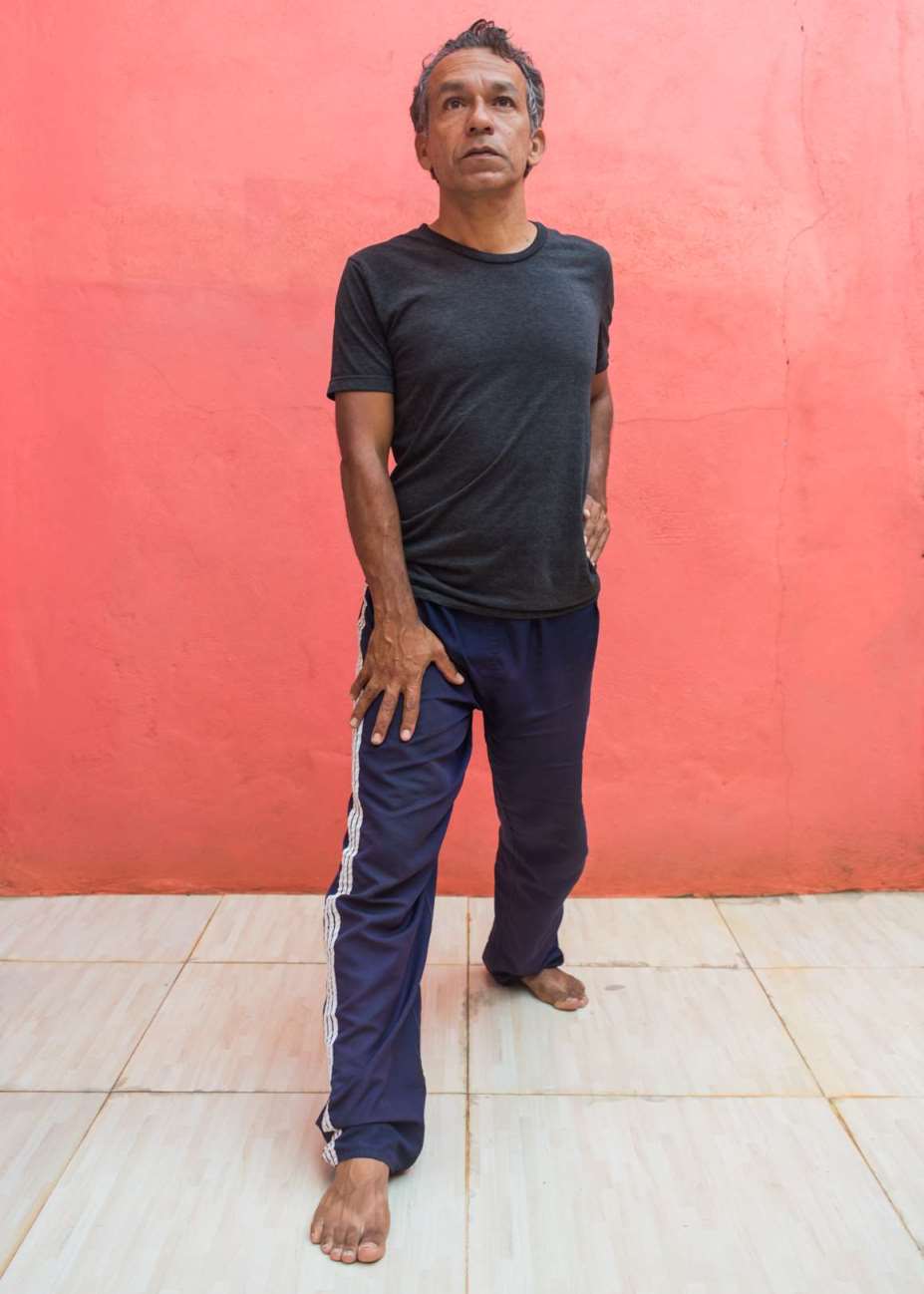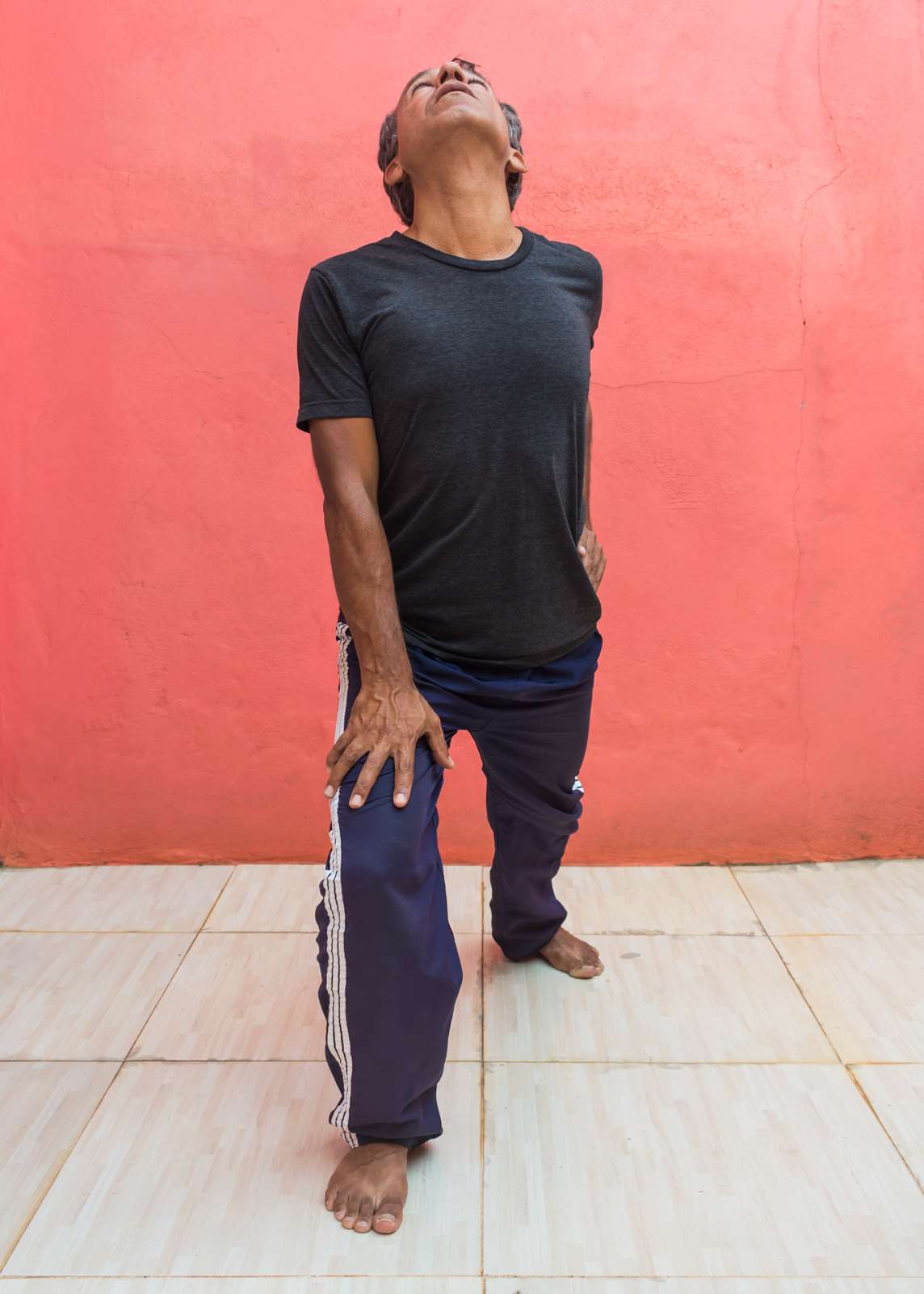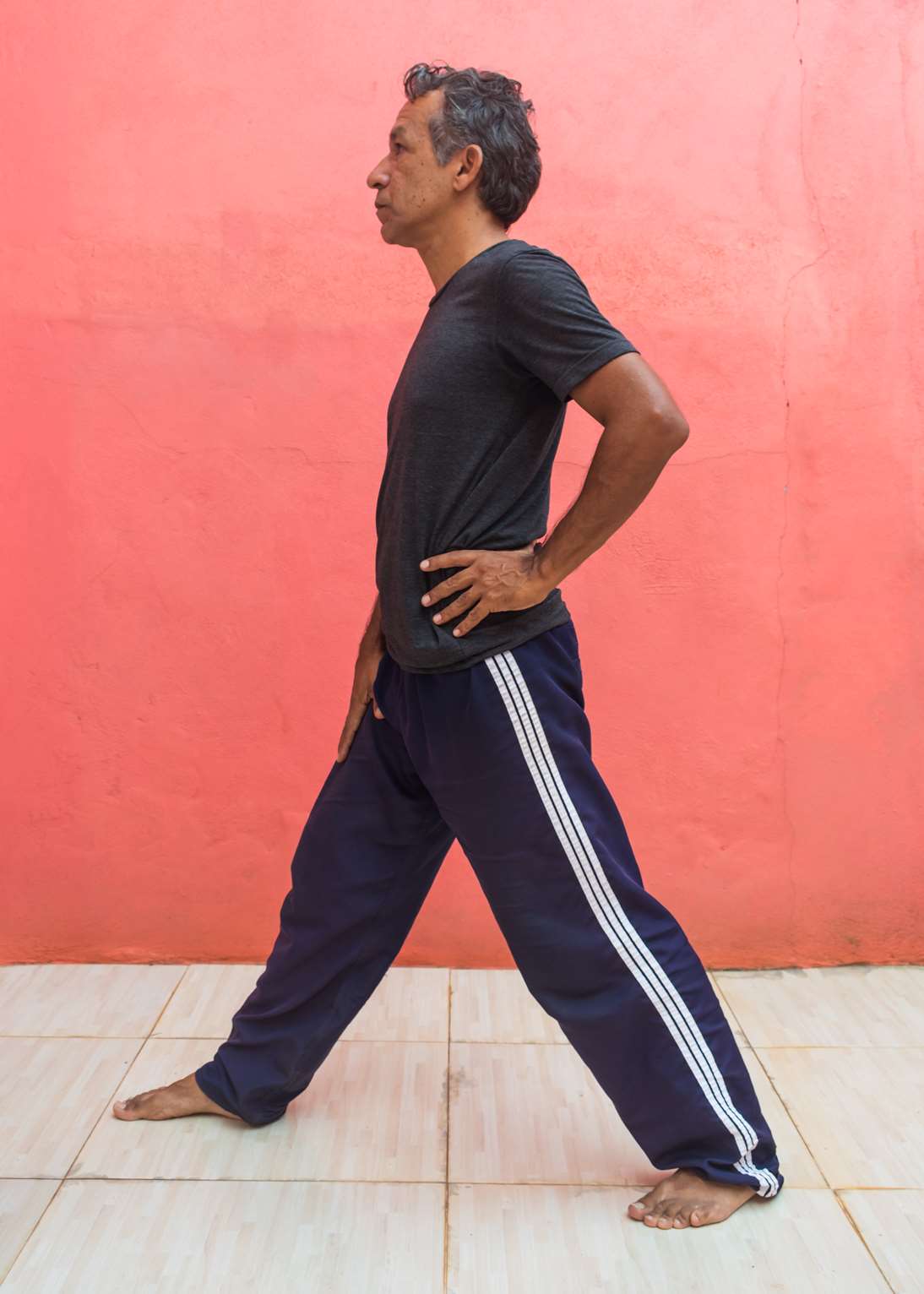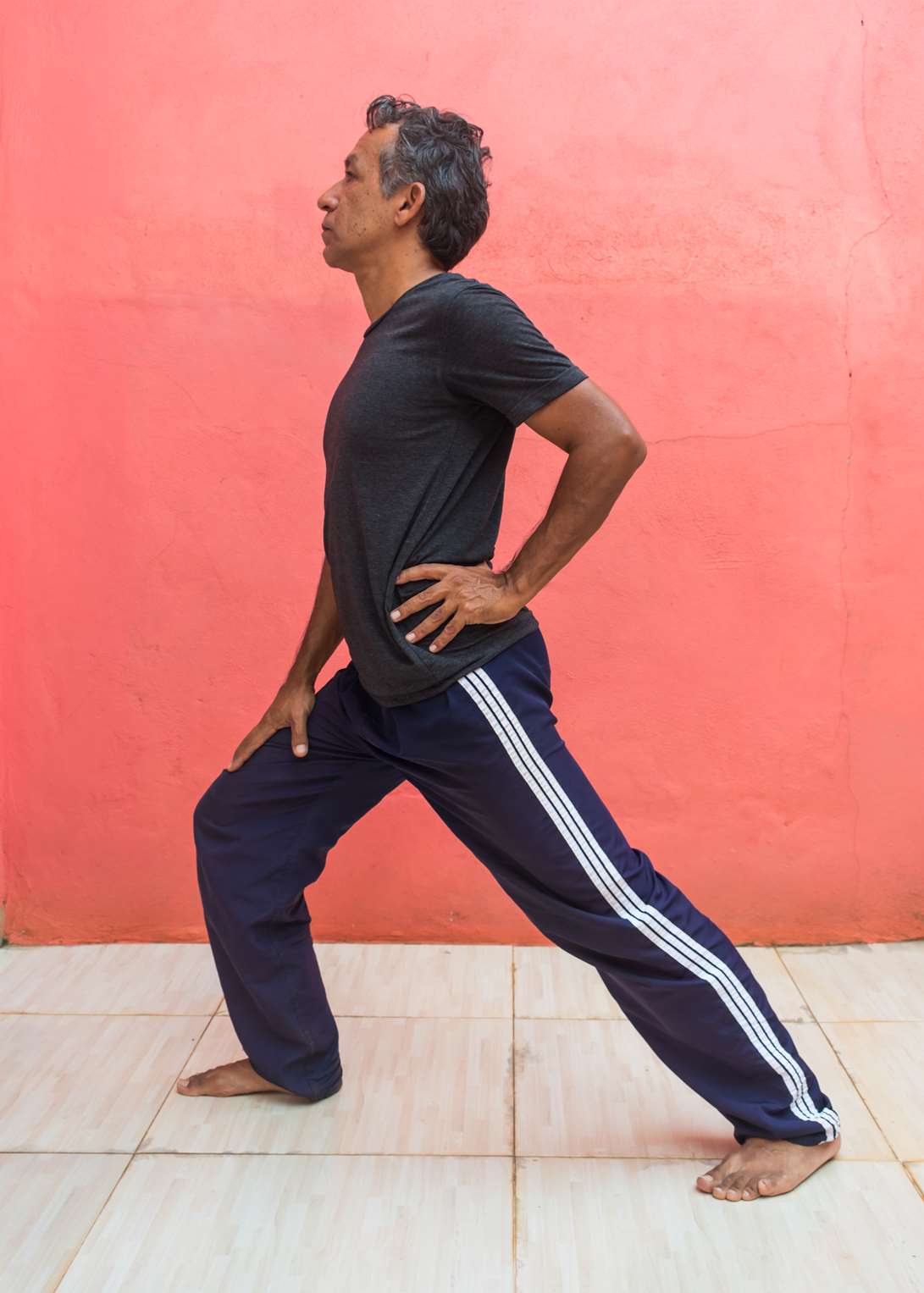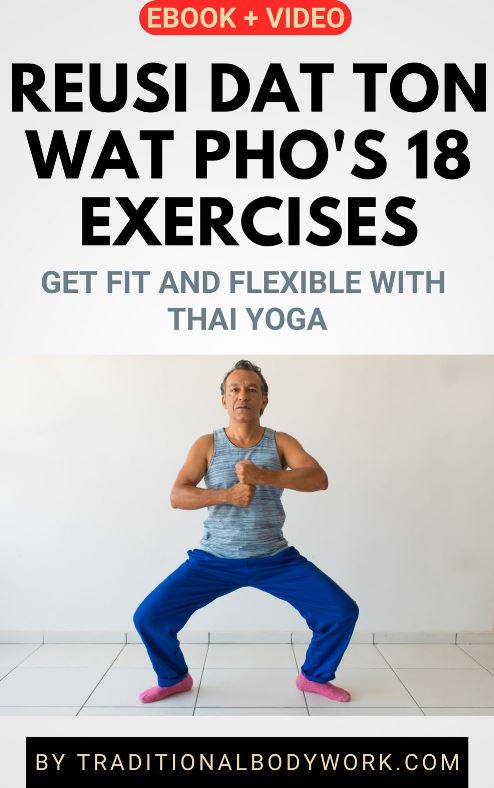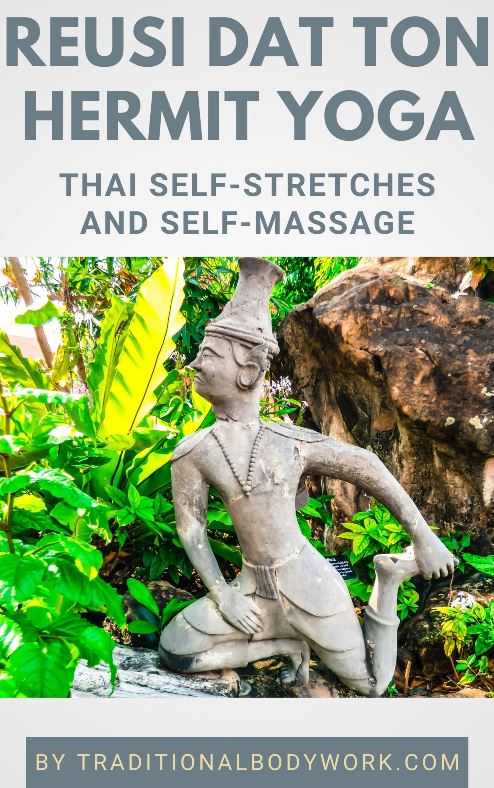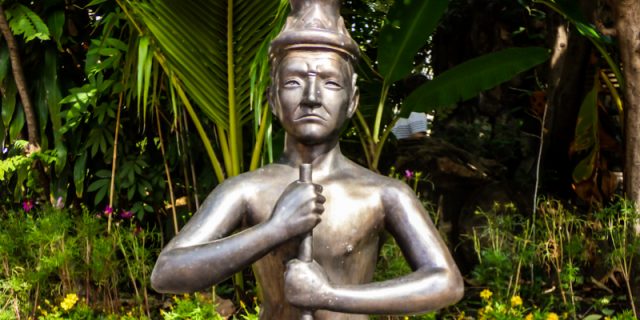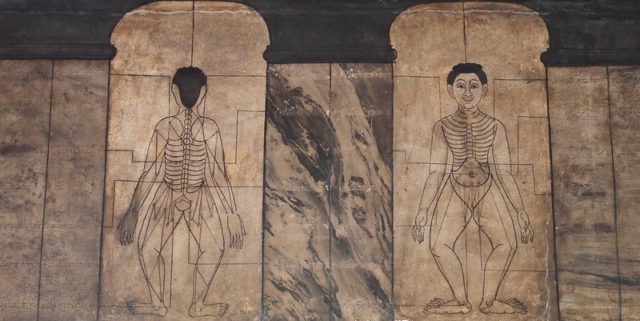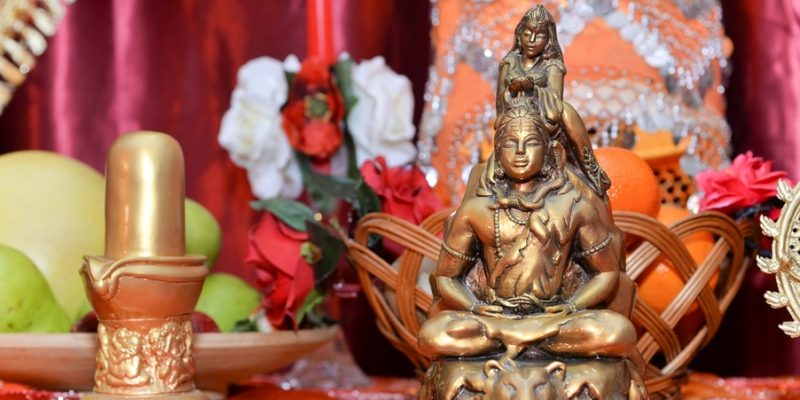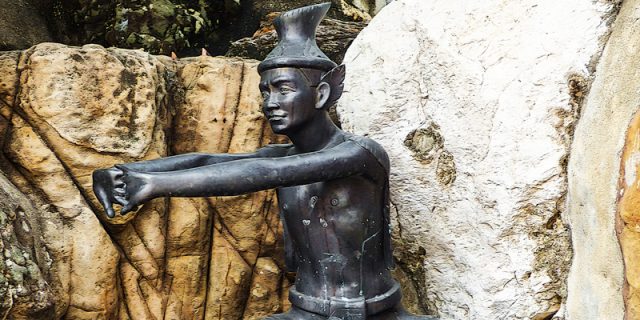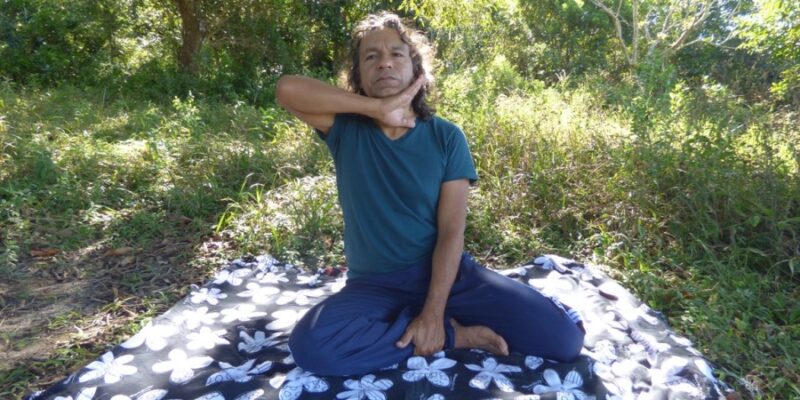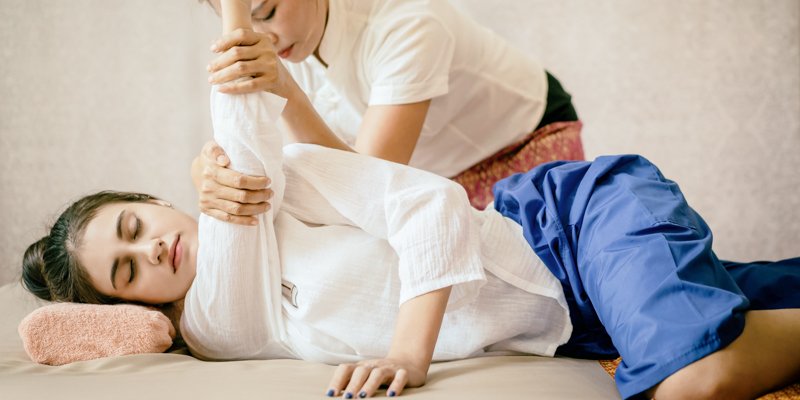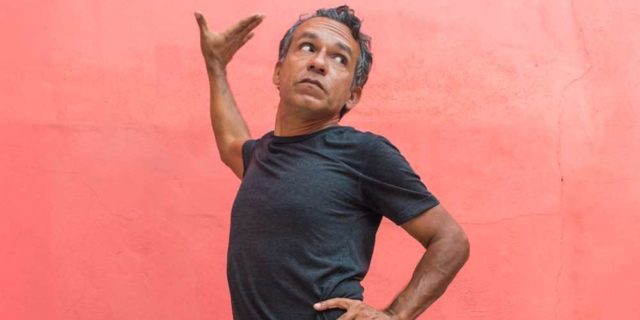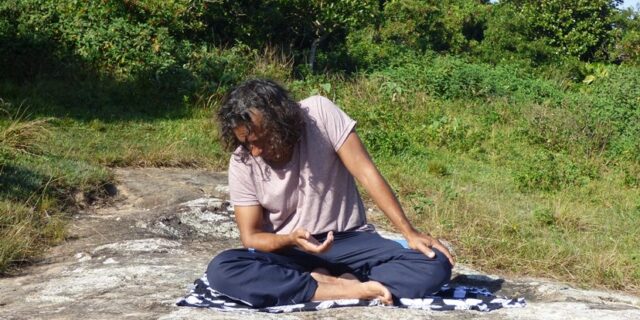
This Rusie Dat Ton sequence consists of two individual exercises (one with the left leg in front of you and one with the right leg in front of you). It’s an exercise part of the 18 Wat Po Rusie Datton Self-Stretching sequences (exercise no. 4). The official name of this exercise, as labeled by the Wat Po Medical Massage School, is Relief of Shoulder and Leg Stiffness.
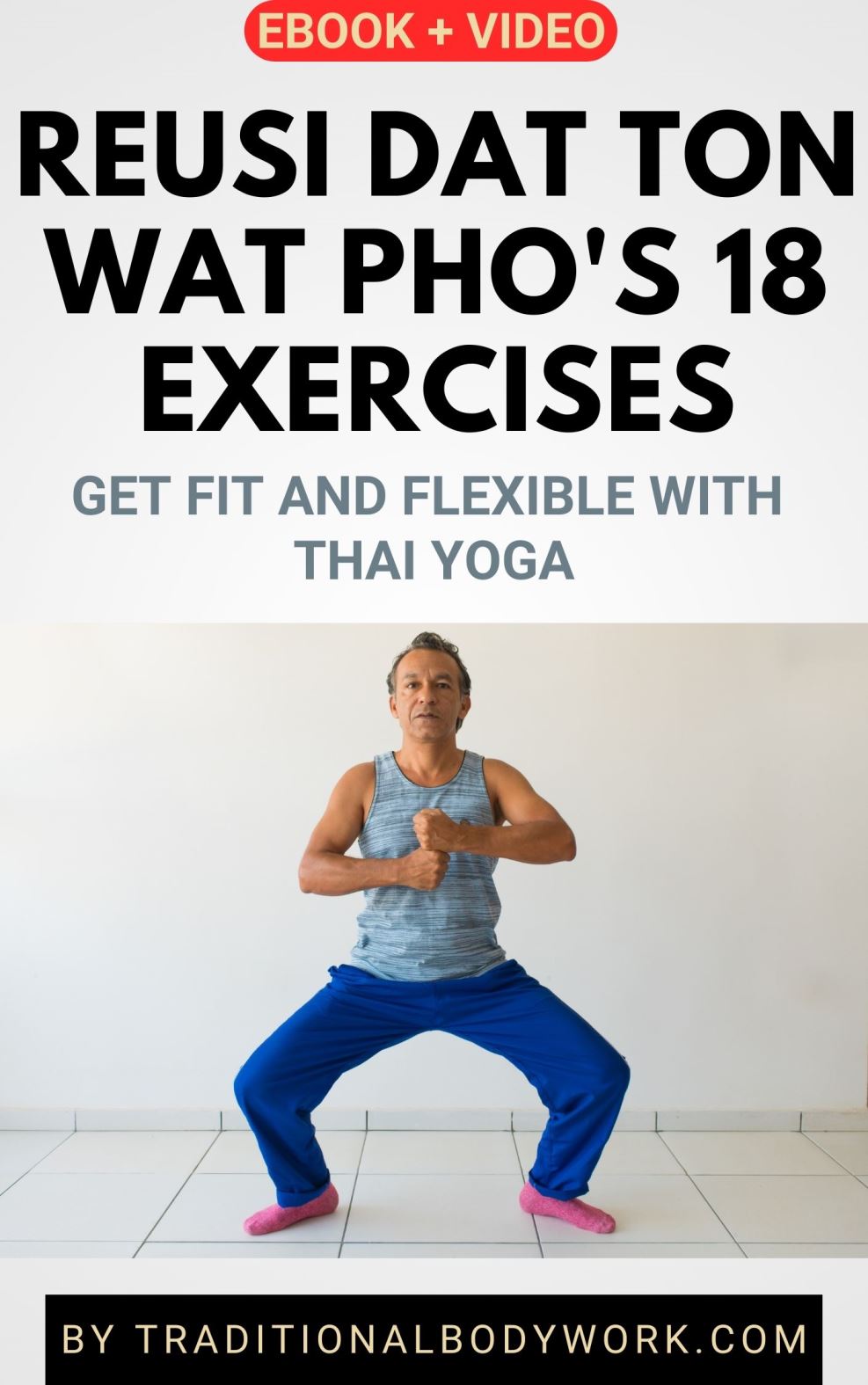
The classical drawing depicted as the lead image of this post can be found as illustration 41 in the Samut Thai Khao, an ancient manuscript dating from 1838, which contains 80 Reusi Datton drawings i.e. illustrations with accompanying descriptions and poems. The 80 Ruesi Datton statues in the Wat Po temple garden are made according to these drawings.
The original accompanying description (i.e. poem) of this statue, written at the time by HRH Prince Nuam, is as follows: “The name of this old hermit is Suktan, he travels to collect medicinal herbs and so he stands up and sits down continuously making him suffer of legs and shoulders stiffness. So, he stands up, with his body leaning forward and his legs in a position similar to a shadow play puppet (Nang Talung).”
After the introduction here below of the aims, health benefits, precautions, contraindications, and exercise instructions, you will find several pictures that demonstrate this exercise.
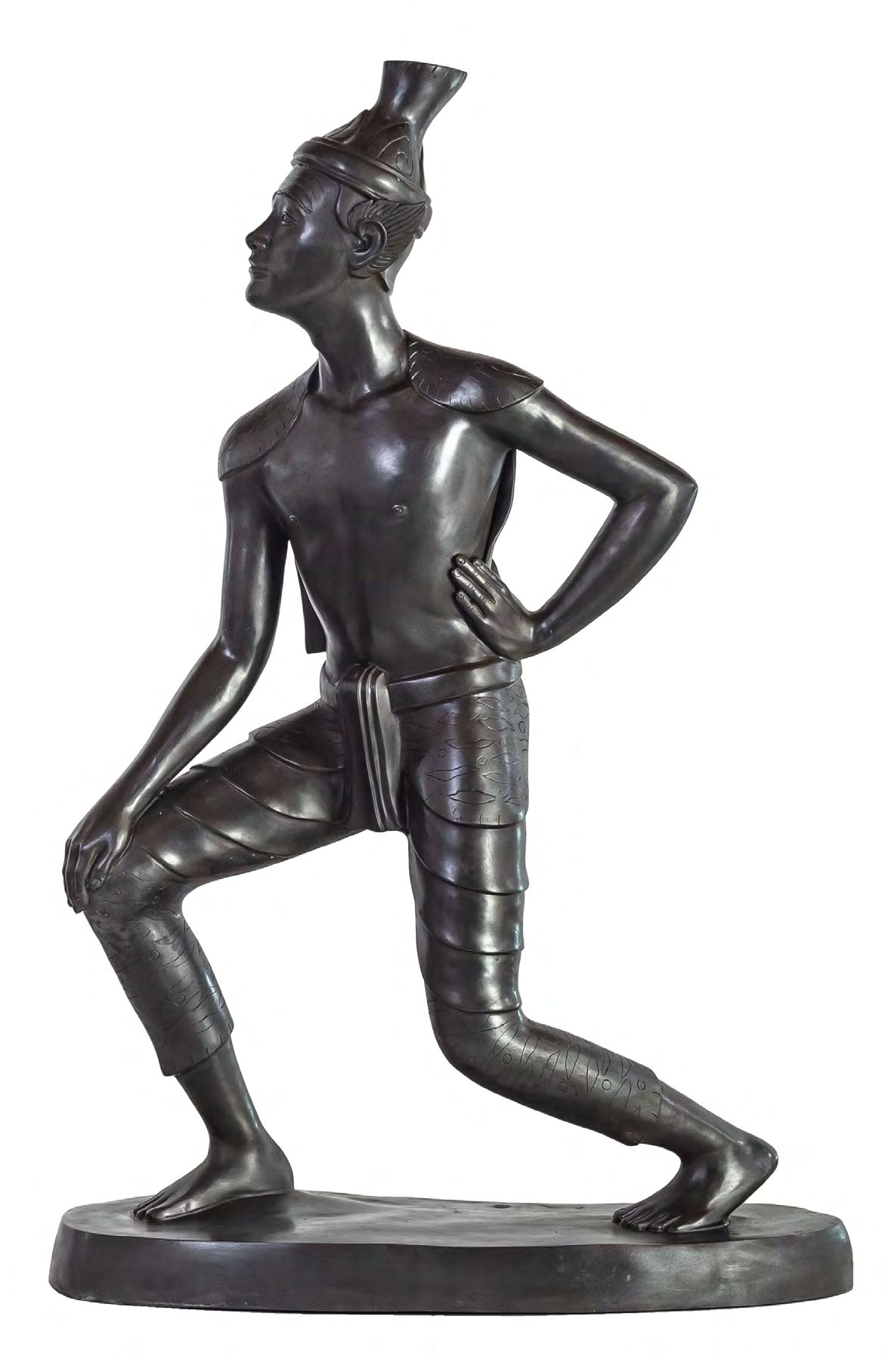
Goals and Benefits of the Exercise
These exercises help to relieve shoulder and leg stiffness and strengthen the legs (notably the front of the thighs, the feet, ankles and knees). They also stretch the hips, calves, and the hamstrings.
Muscle Engagement
These exercises stretch the sternocleidomastoid, hip flexor group, hamstrings, gastrocsoleus complex, and supraspinatus.
Additionally, the exercises train and strengthen the quadriceps femoris, knees, tibialis anterior, and erector spine muscles.
Precautions and Contraindications
Be careful (or don’t do this exercise) if you suffer from herniated spinal discs, osteoarthritis of the knees, vertigo, and unstable blood pressure. Be careful after a hip or knee operation.
How to Perform the Exercises
– Choose your breathing technique.
– Choose if you will use power or not.
Each of the individual exercises described below is repeated twice (two times with the left leg in front of you and two times with the right leg in front of you).
Instructions for the sequence:
- Place your left thumb behind the back (the left hand leans on the hip), lean with the right hand on the right knee and lean forwards bending the right knee. Hold the pose 3 seconds before returning (perform two times).
- Place your right thumb behind the back (the right hand leans on the hip), lean with the left hand on the left knee and lean forwards bending the left knee. Hold the pose 3 seconds before returning (perform two times).
The pictures below show the exercise performed with the right leg in front of you. The idea is to do this exercise twice, and then also twice with the left leg in front of you.
Mind that the Wat Pho illustrations above have a bent knee for the back leg, which strengthens the quadriceps (upper front thigh). However, in the version executed below the back leg is straightened, which stretches the hamstrings (upper back thigh).
